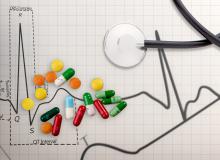What was measured at home was around 6.0 millimoles per liter, but as soon as we got to the hospital, the readings were around 7.0 or even 8 millimoles per liter. An important reason for this phenomenon may be related to the time when fasting blood glucose is measured.
The testing time at home is usually earlier, at around 6 or 7 o'clock in the morning, while the hospital usually opens at 8 o'clock, and there are some procedures to go through, so the test may not be available until 9 o'clock. The blood sugar measured at 9 o'clock is likely to be higher than the blood sugar measured at 7 o'clock, thus creating the illusion that blood sugar in the hospital is higher than at home.
People with diabetes should know that even if you don’t eat in the morning, your blood sugar is not constant, but gradually increases. In other words, blood sugar at 10 o'clock is likely to be higher than blood sugar at 8 o'clock. In order to avoid the impact of testing time on blood sugar, we stipulate that the blood sugar measured between 6 and 8 am is the true fasting blood sugar. However, many patients fast until 10 o'clock or even 11 o'clock when they go to the hospital for examination. The blood sugar value measured at this time is not accurate enough.
If the blood sugar at home and the hospital are inconsistent due to the above reasons, the blood sugar at home is generally used as the standard for our blood sugar control. In addition, how long should you not eat before measuring blood sugar? Standard fasting blood sugar refers to blood sugar measured after fasting for 8 to 10 hours overnight. In other words, you generally cannot eat after 10pm the night before. If you eat a snack very late, after 10 o'clock, the next day's blood sugar will not be counted as fasting blood sugar.

